In the 6th century BC, after the conquest of western Sicily, the Carthaginians planned to annex Sardinia. A first invasion attempt led by Malco was foiled by the victorious Nuraghic resistance. However, from 510 BC, the southern and west-central part of the island was invaded a second time and came under Carthaginian rule.
In 238 BC, the Romans annexed Sardinia from the Carthaginians, and it became part of the province of Corsica and Sardinia. Roman rule in Sardinia lasted 694 years, during which time the province was an important source of grain for the capital. Latin came to be the dominant spoken language during this period, though Roman culture was slower to take hold, and Roman rule was often contested by the Sardinian tribes from the mountainous regions.
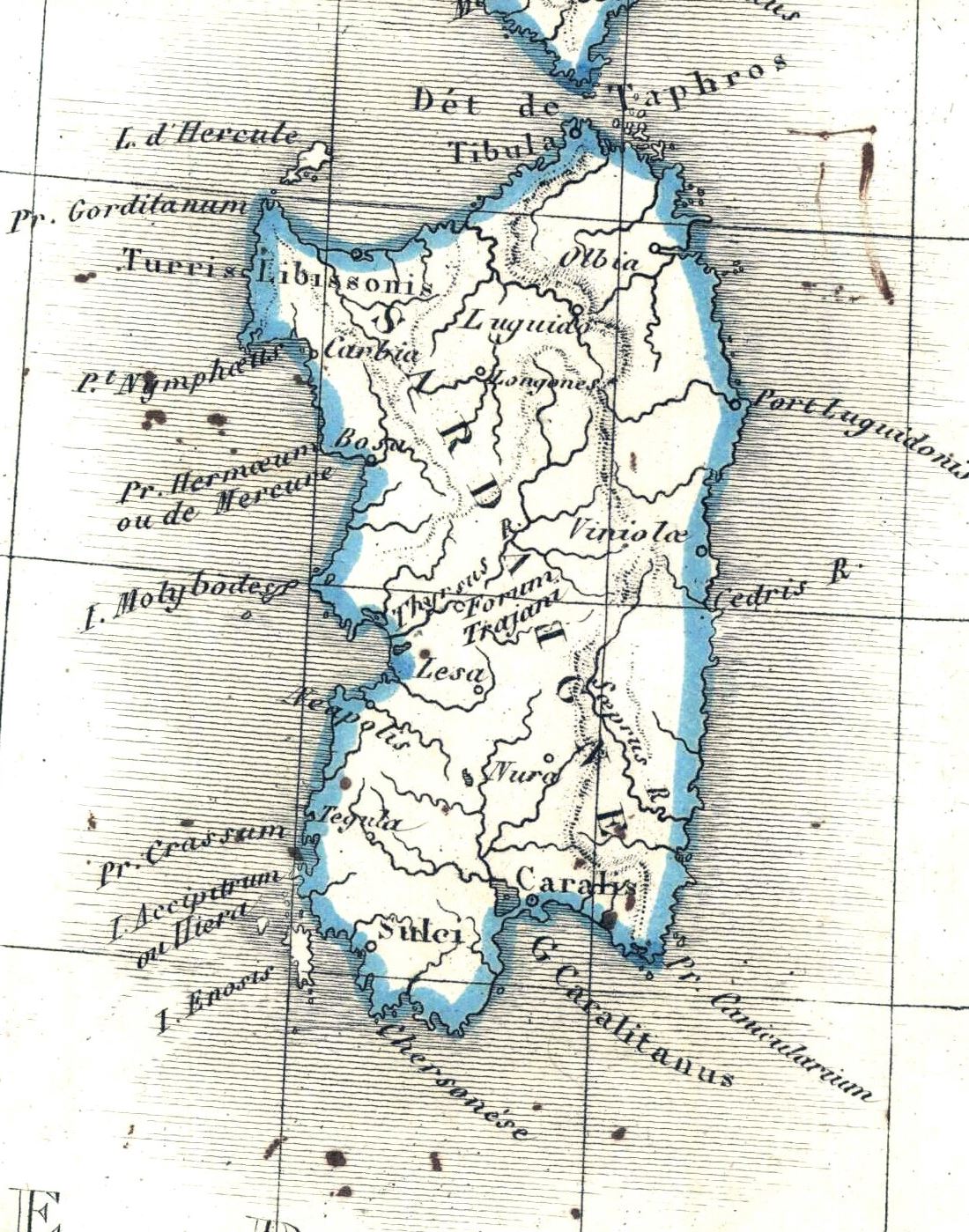
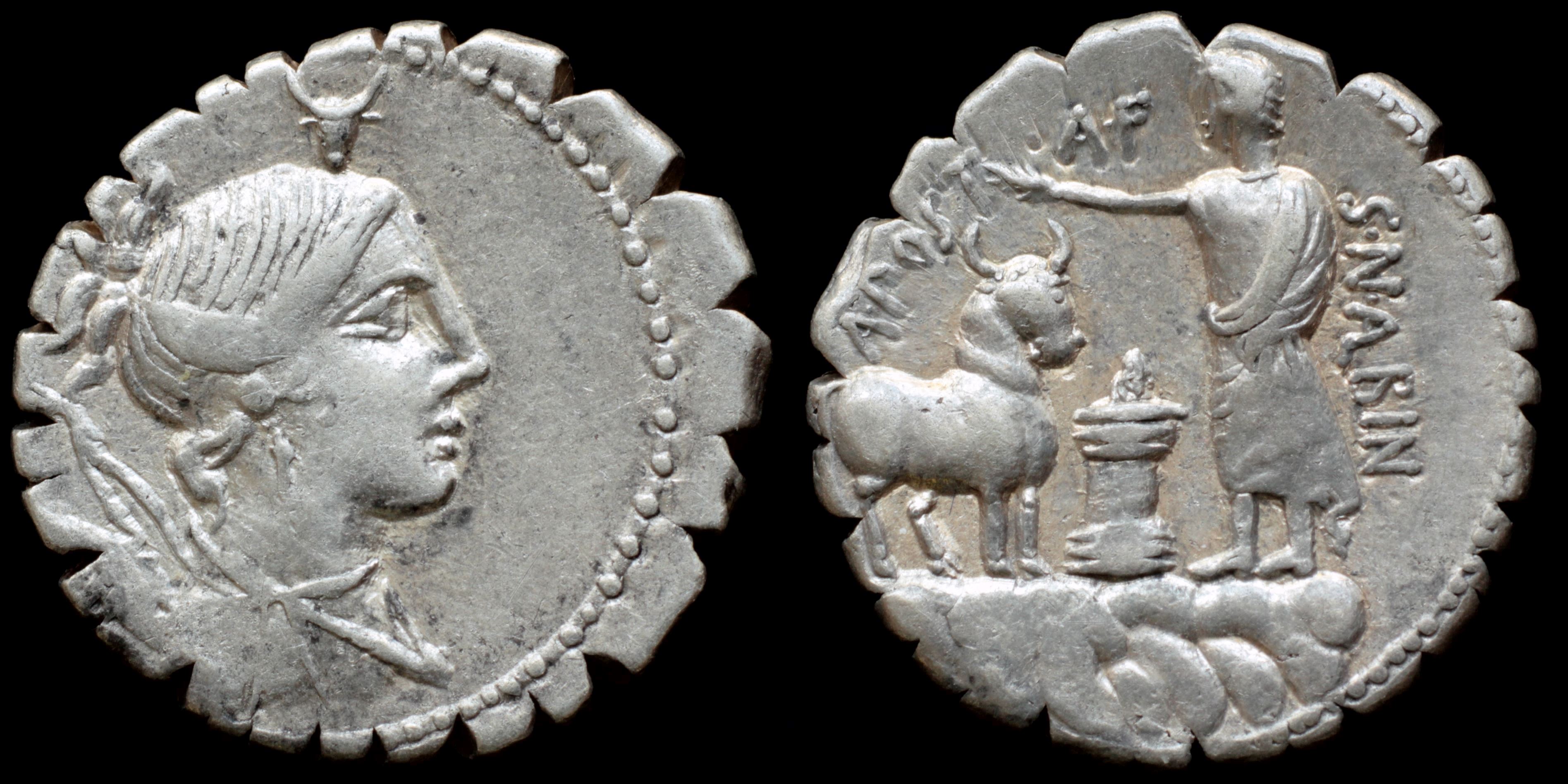
Reverse: togate figure standing left before flaming altar, holding sprinkler over sacrificial bull, all on stone platform, A·POST ·A·F S·N·(AL)BIN
Die Orientation: -
Weight: 3.7 g
According story described by Livy: in Sabina a cattle of admirable size and beauty was born. Animal was sacrificed and his skull (bucranium) was placed in temple of Diana where it commemorate this wonder. The event was considered to be a prophetic sign that town whose citizen sacrifice the animal will rule. Before battle at Regillius Lake Roman citizen (Postumius' ancestor) took the cattle and sacrificed it in the temple of Diana on Aventine.
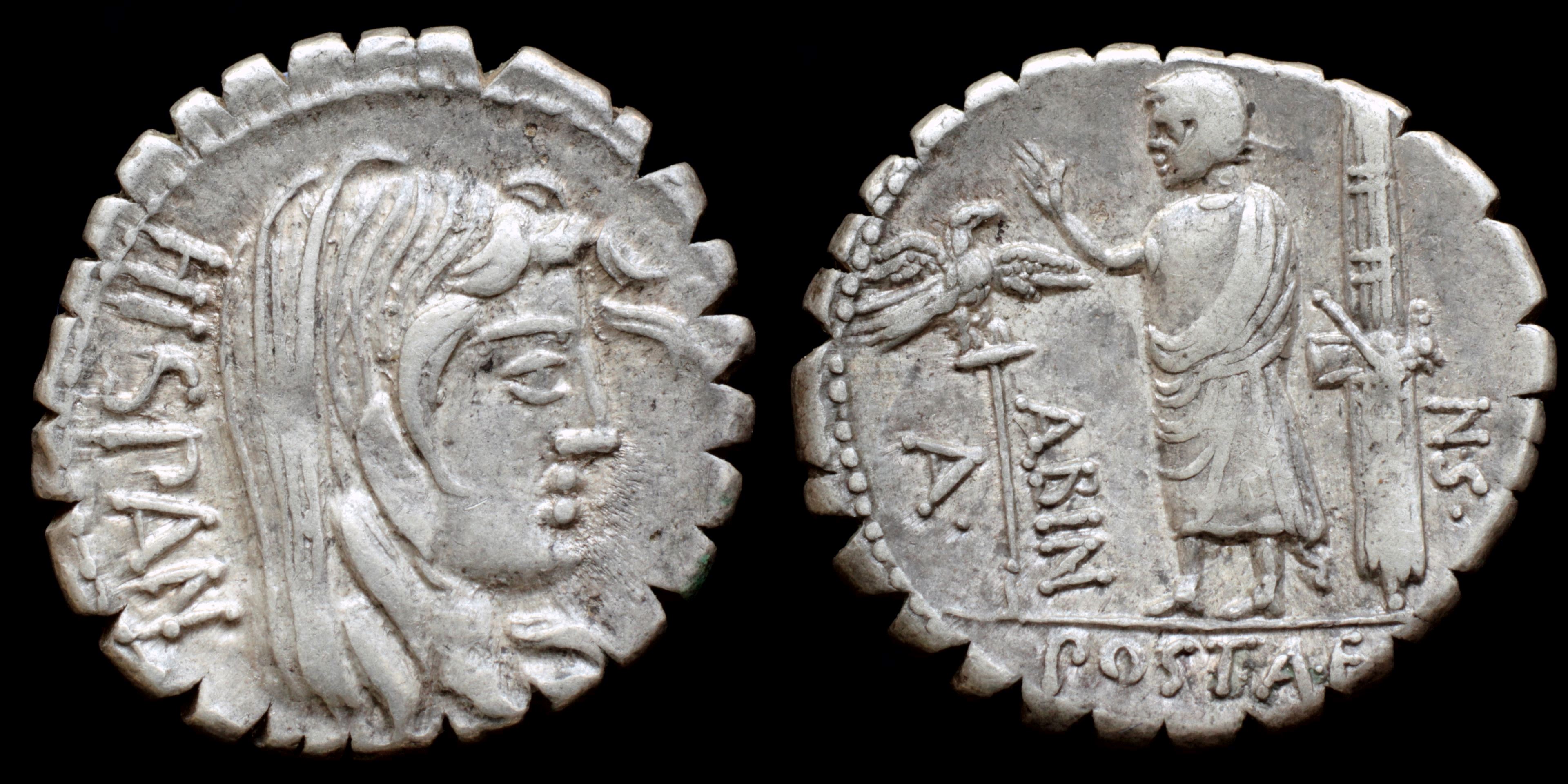
Reverse: togate figure standing left, extending hand toward legionary eagle right; fasces with axe right A· / (AL)BIN / N·S· / POST·A·F
Die Orientation: -
Weight: 3.8 g
Refers to the praetorship of L. Postumius Albinus over Spain and his successful expeditions against the Vaccaei and Lusitani, and the levying of troops for this campaign.
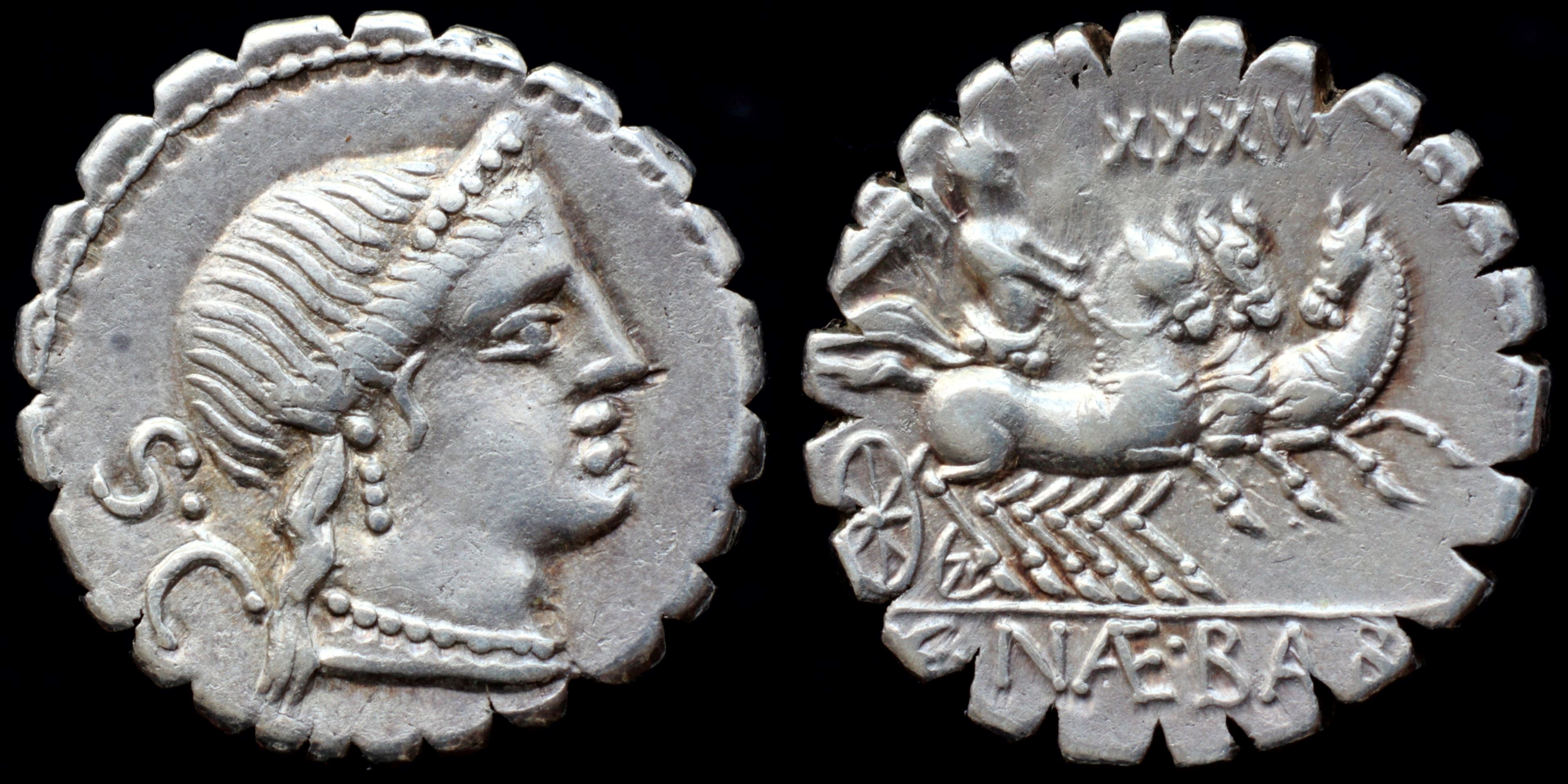
Reverse: Victory right in triga holding reins; XXXIII / C·N(AE)·B(AL)B
Die Orientation: -
Weight: 3.9 g
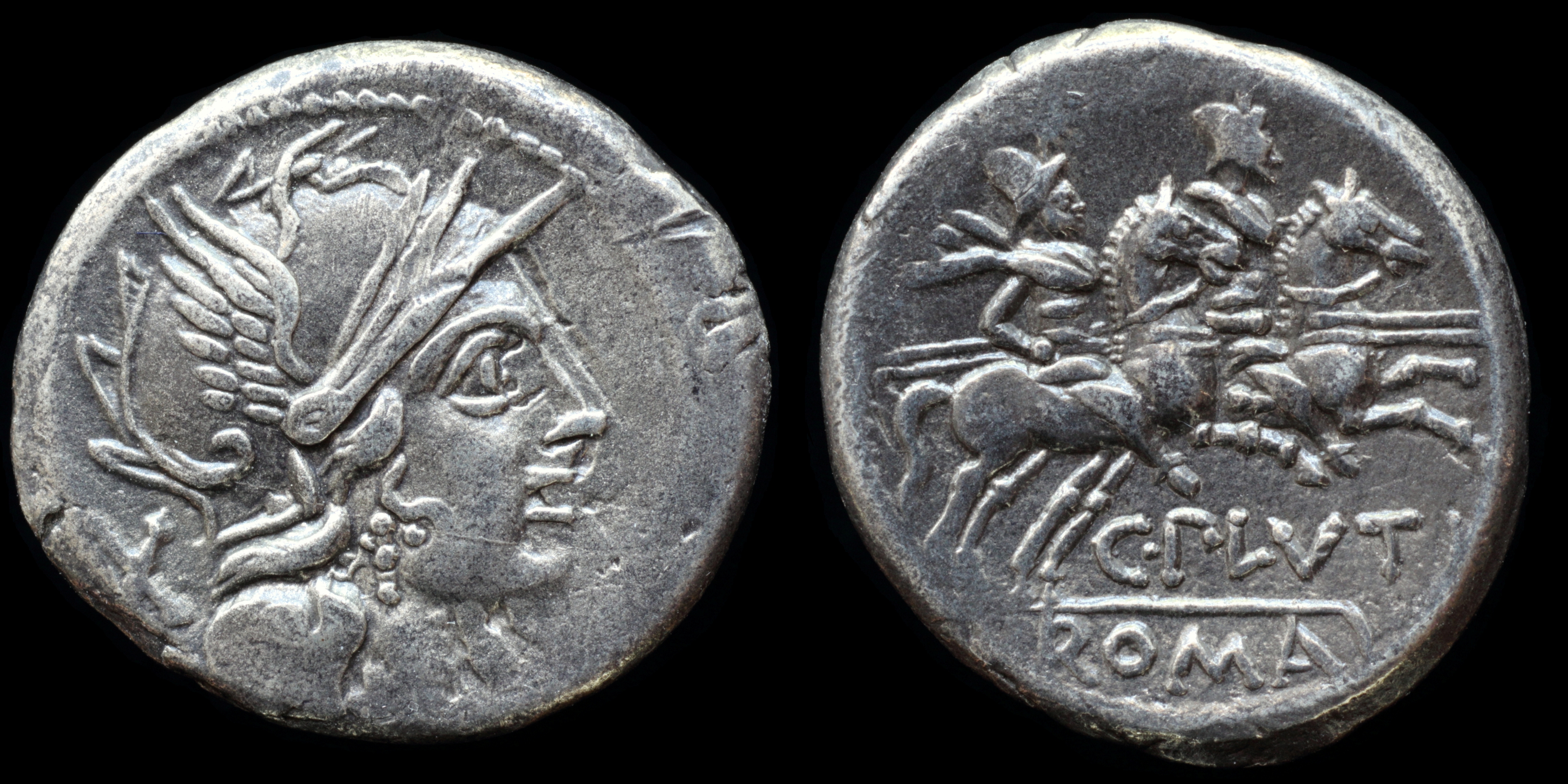
Reverse: Dioscuri riding on horses right, holding spear; C·PLVTI / ROMA
Die Orientation: -
Weight: 3.8 g
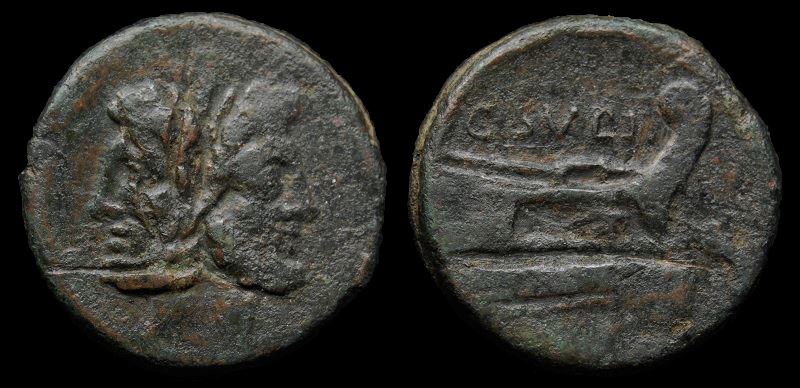
Reverse: Prow right; C•SVLPI above; palm-branch in right field; ROMA below.
Die Orientation: 0 H
Weight: 32.68 g
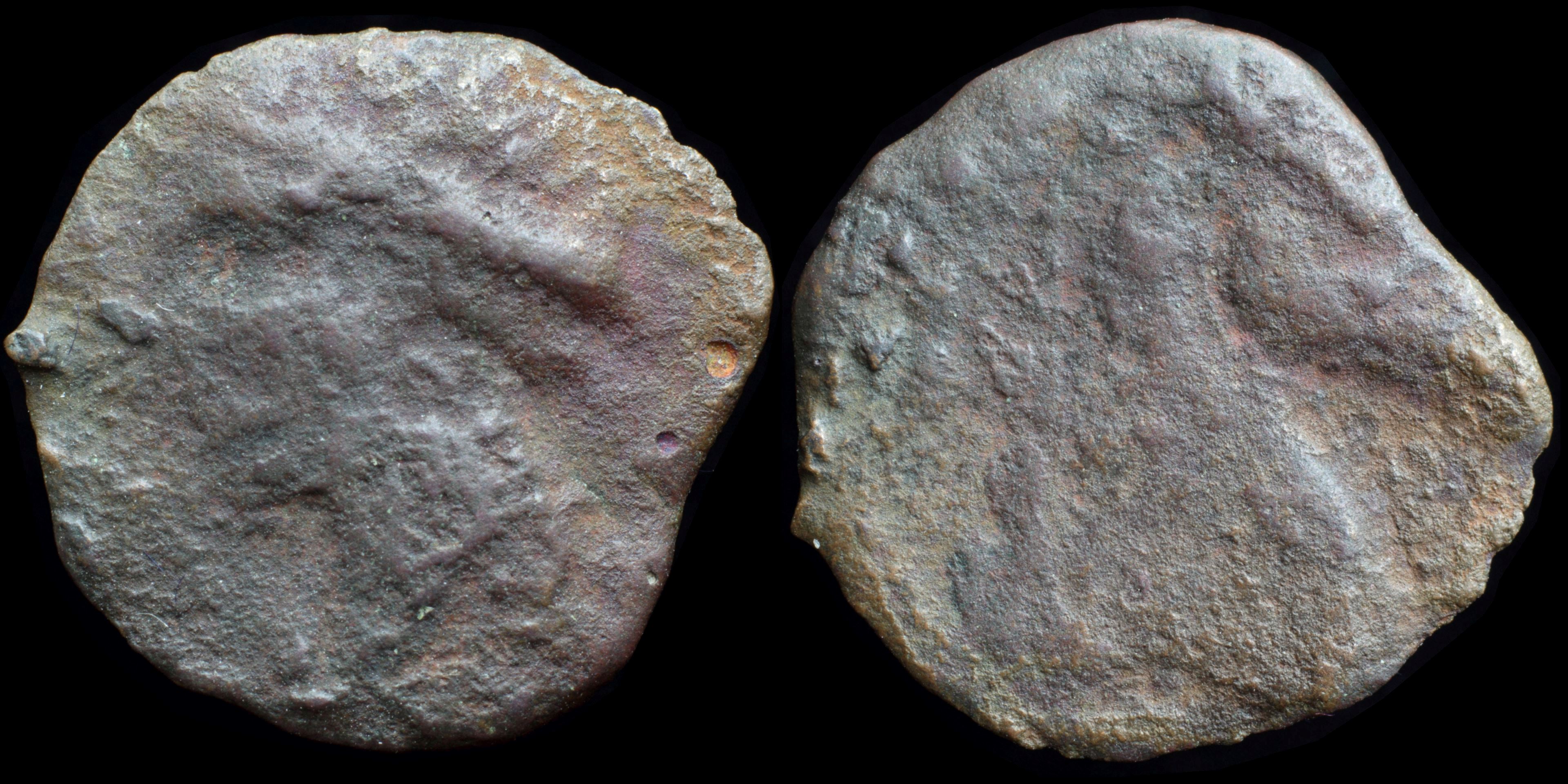
Reverse: head of horse right
Die Orientation: -
Weight: 2.33 g

Reverse: prow of galley right, fighting platform with club; ROMA / C /●●
Die Orientation: -
Weight: 3.9 g
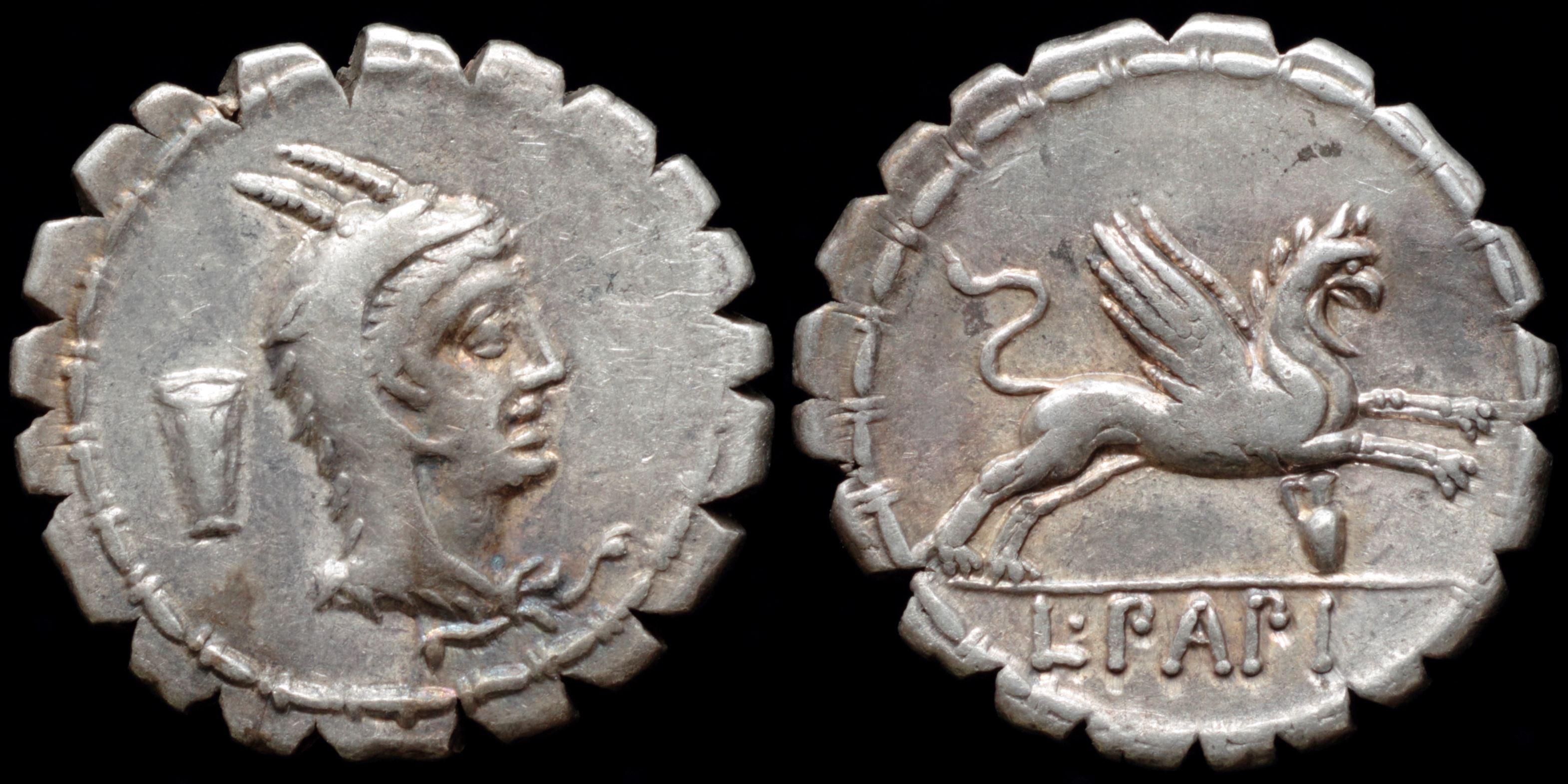
Reverse: Gryphon springing right; jug below L.PAPI
Die Orientation: -
Weight: 4 g
Gens Papia was Samnite origin and family came from Lanuvium.
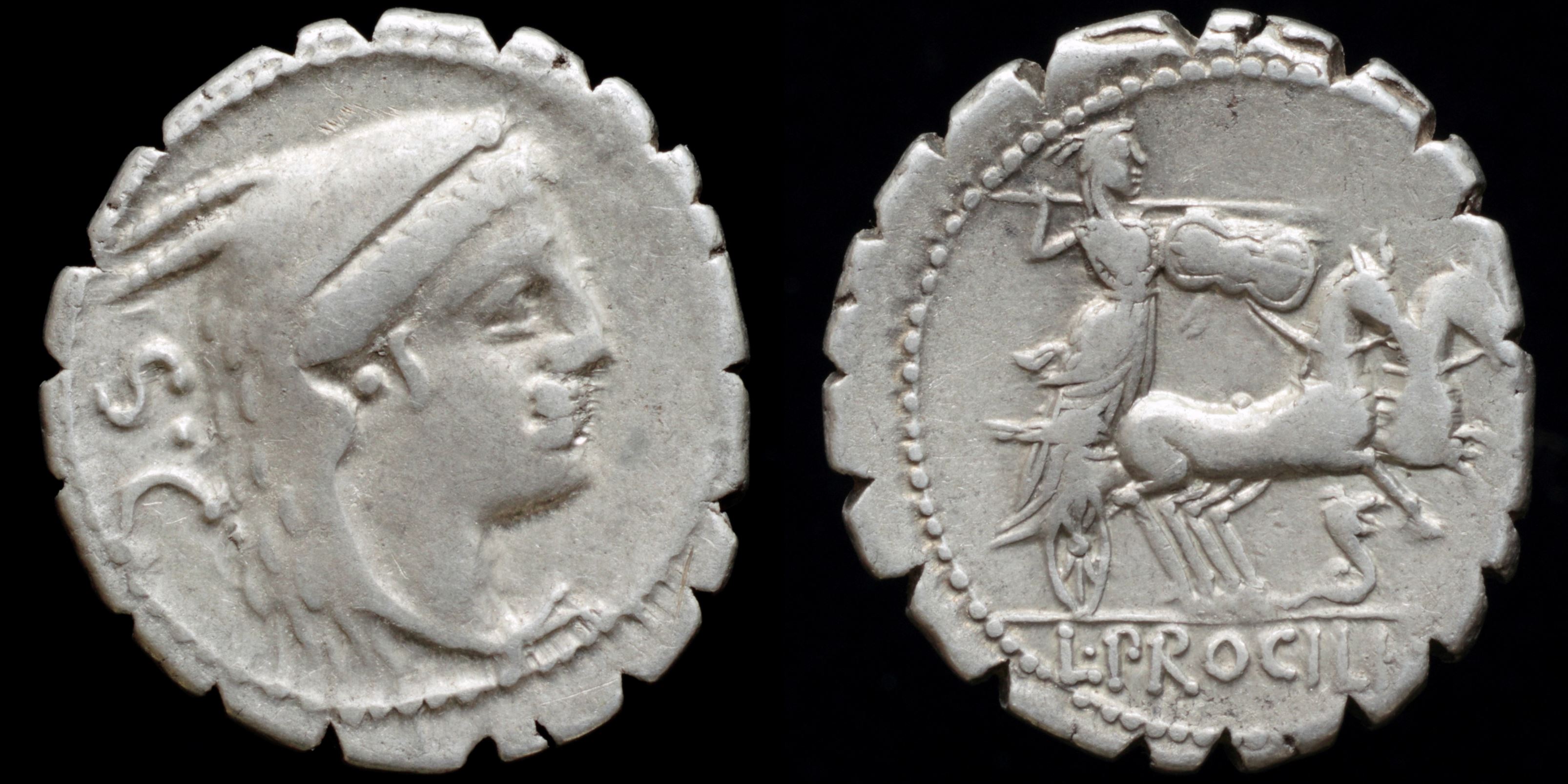
Reverse: Juno Sospita in biga right holding spear, reins and shield, snake below, L.PROCILI.F
Die Orientation: -
Weight: 3.9 g
Juno Sospita offered protection to women, accompanying them throughout their lives from birth to death. She was often called upon by infertile women to aid in conception. Juno Sospita had a two temples at Rome, but her most famous temple was at Lanuvium. Her statue there, as described by Cicero and as depicted on coinage, wore a goatskin coat with a goat-horned headdress. Her attribute, the serpent, inhabited a grotto near her temple, and was fed annually by a young girl, who, if a virgin, escaped unharmed, but if not, was destroyed.

Reverse: Victory in quadriga right holding reins and palm branch M·F(AN)·C·F
Die Orientation: -
Weight: 4.1 g
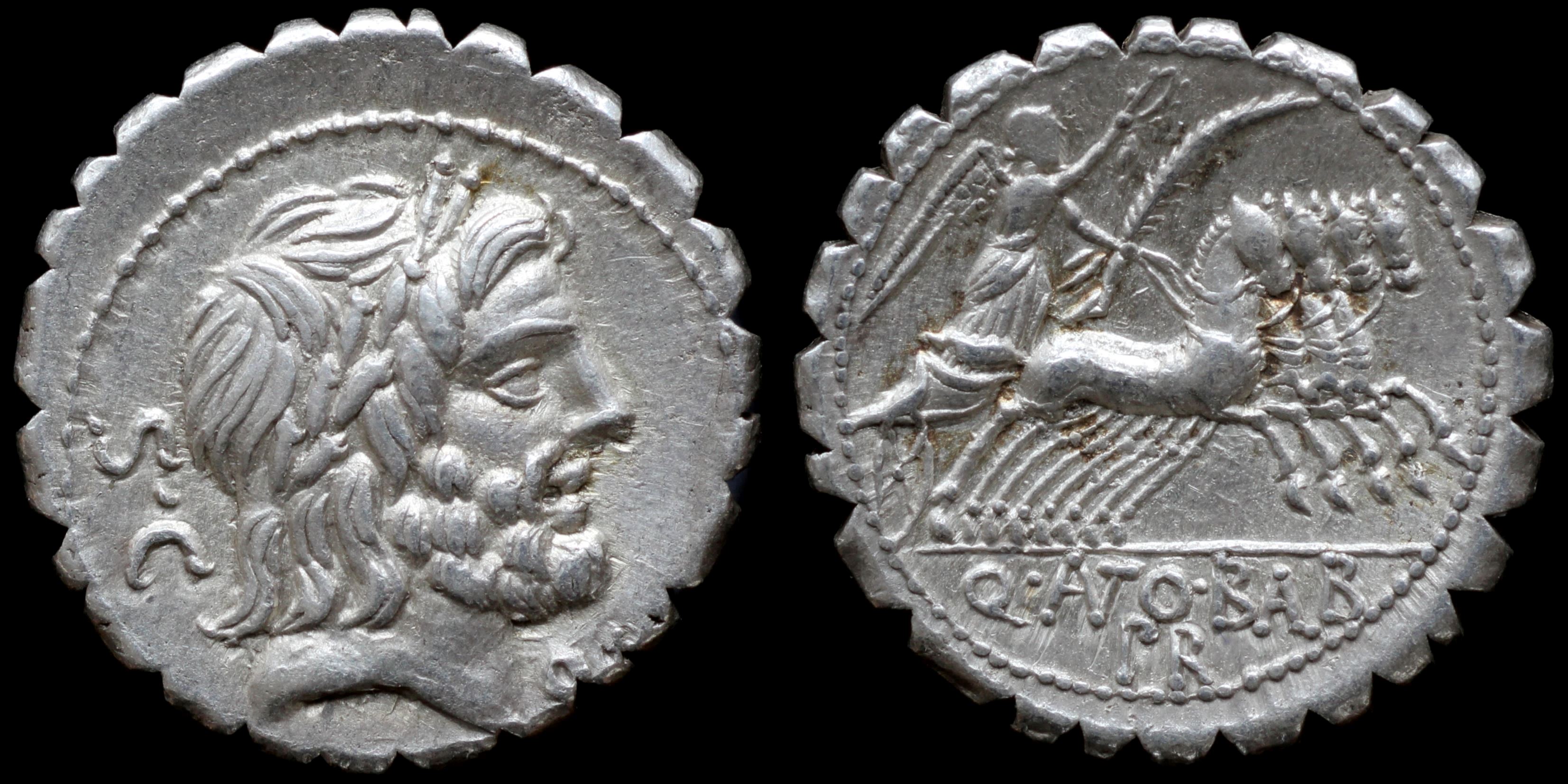
Reverse: Victory riding in quadriga right, holding wreath, reins and palm branch, Q·(ANT)O·B(AL)B / PR
Die Orientation: -
Weight: 3.9 g
Moneyer who belonged to the opposition of Sulla struck these coins as praetor in Sardinia according special decree of senate (Senatus Consulto). He was driven from Sardinia by L. Philippus, the legate of Sulla, and slain. Victory on reverse didn't avert defeat of oppositon in battle of Colline Gate.
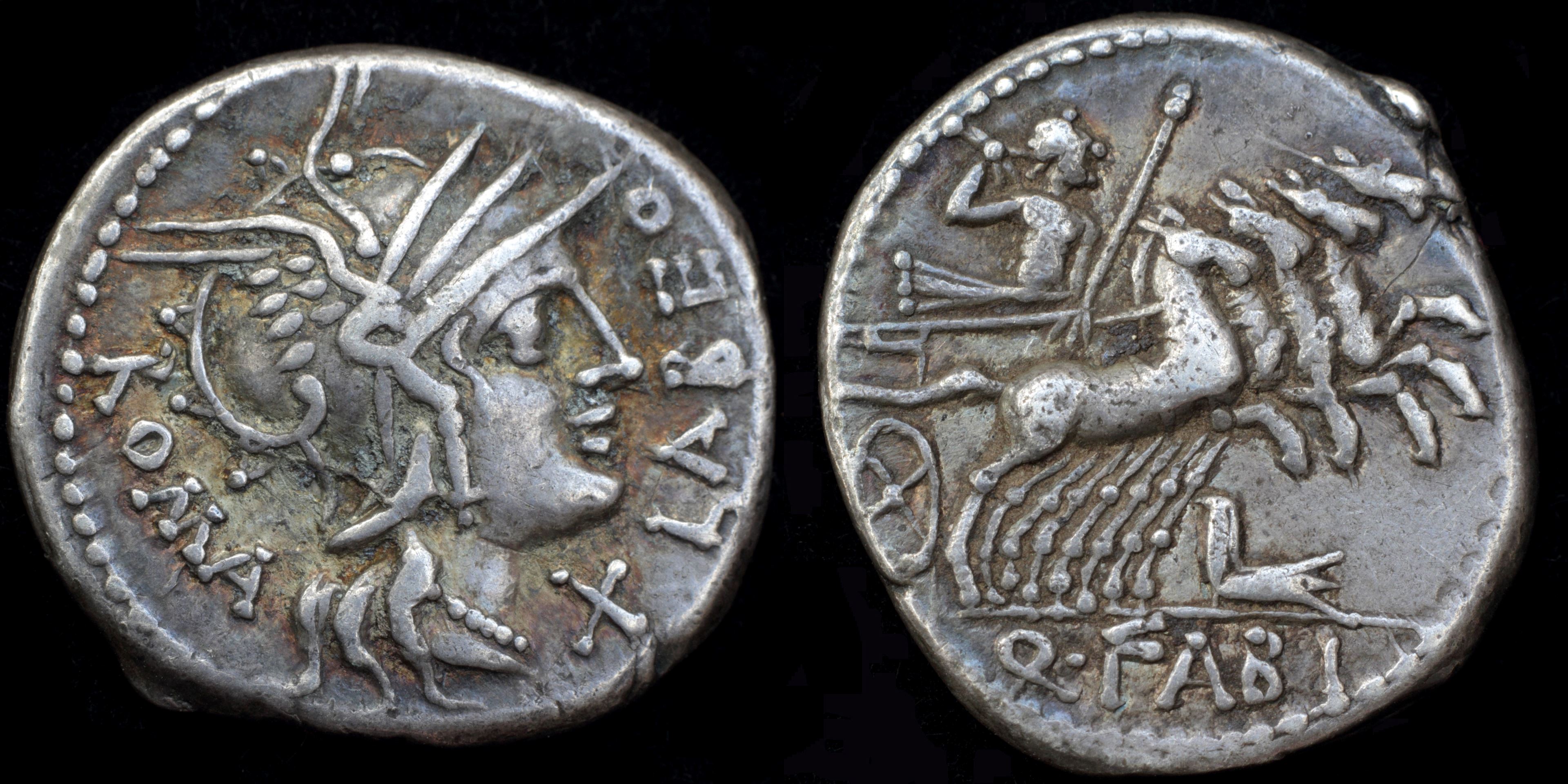
Reverse: Jupiter in quadriga right, holding reins and scepter, hurling thunderbolt, rostrum tridens below Q·FABI
Die Orientation: -
Weight: 3.9 g
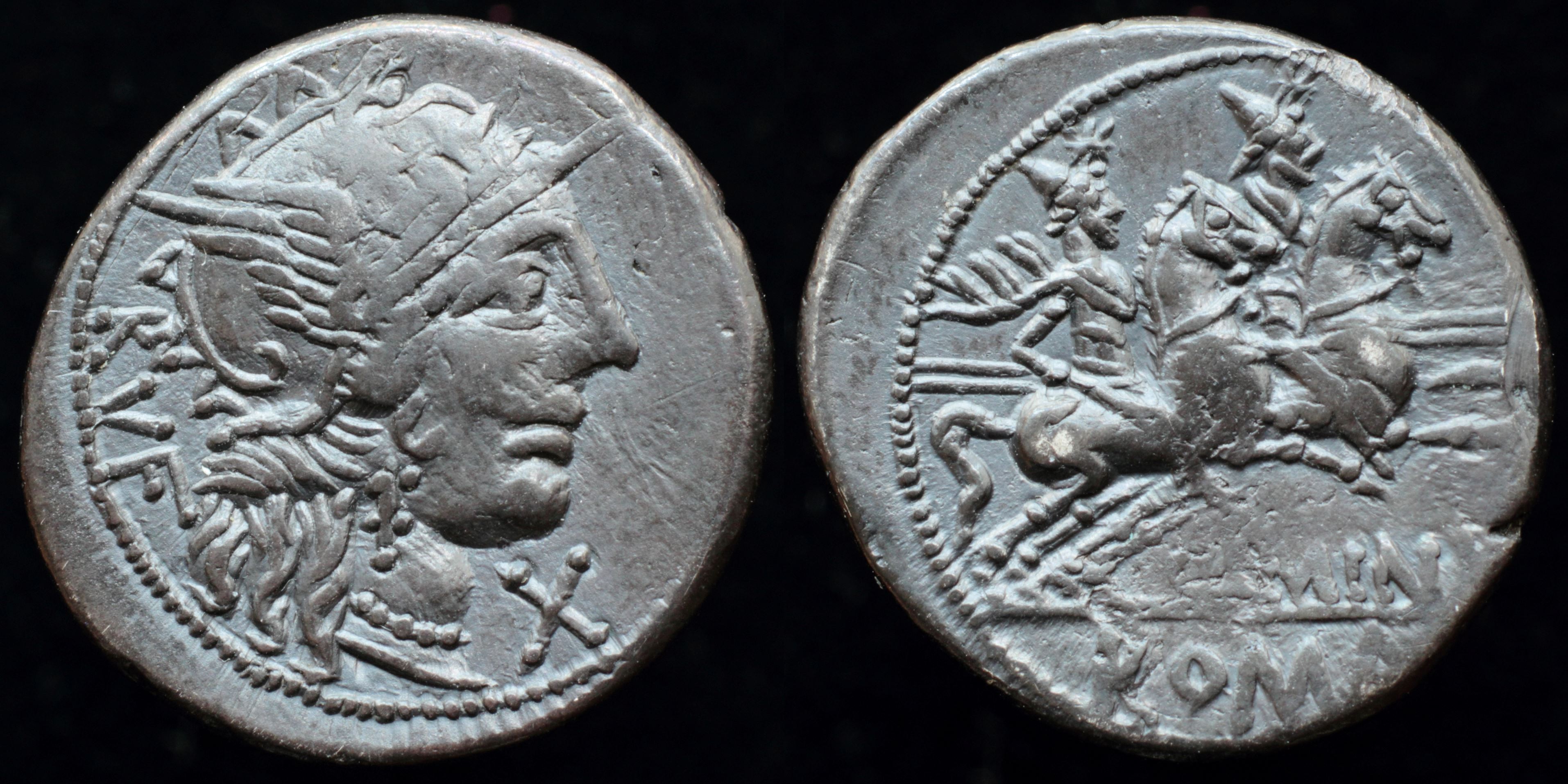
Reverse: Dioscuri riding on horses right, holding spear Q·MINV ROMA
Die Orientation: -
Weight: 3.9 g
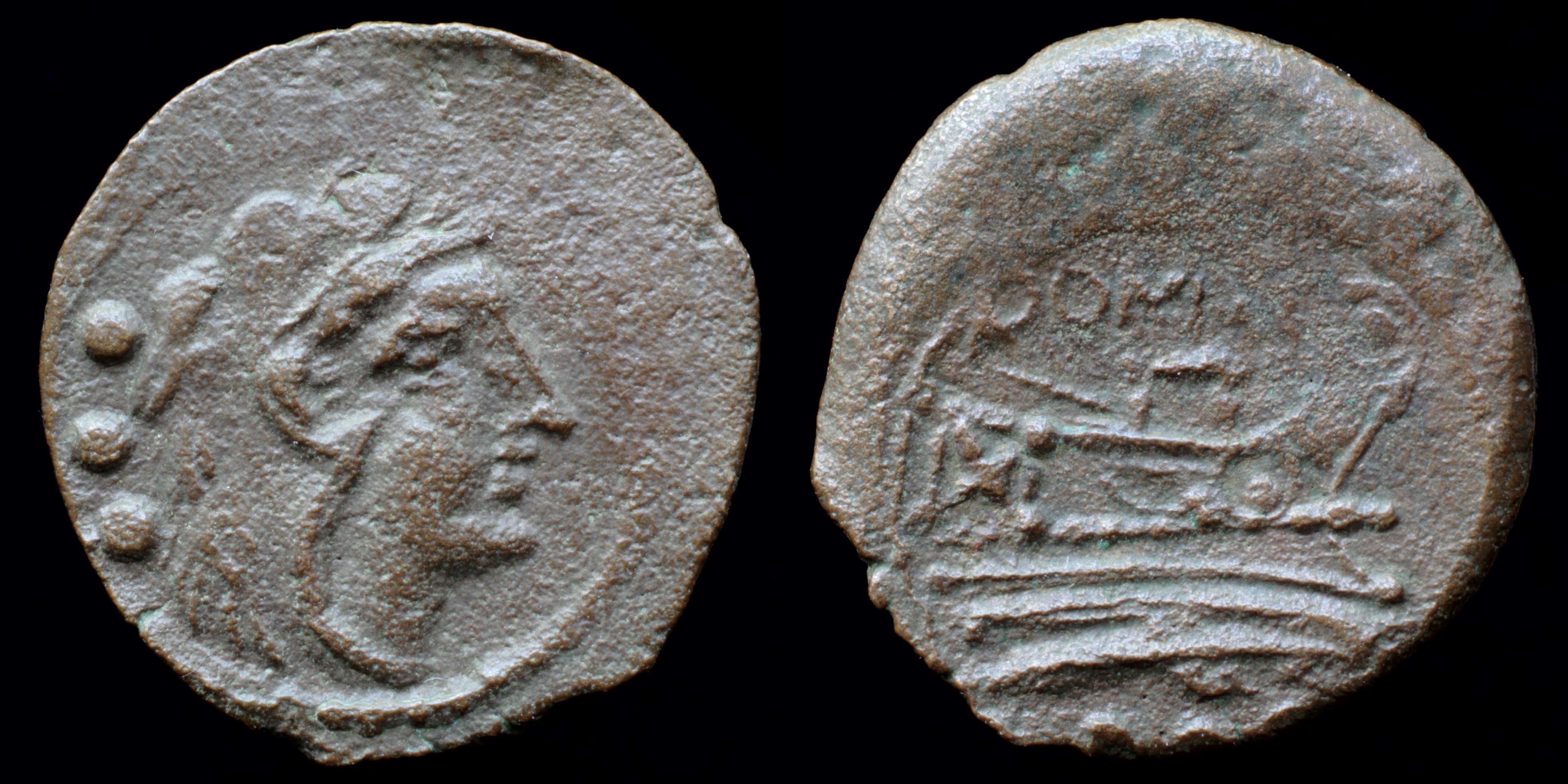
Reverse: prow of galley right ROMA; ●●●
Die Orientation: -
Weight: 2.8 g
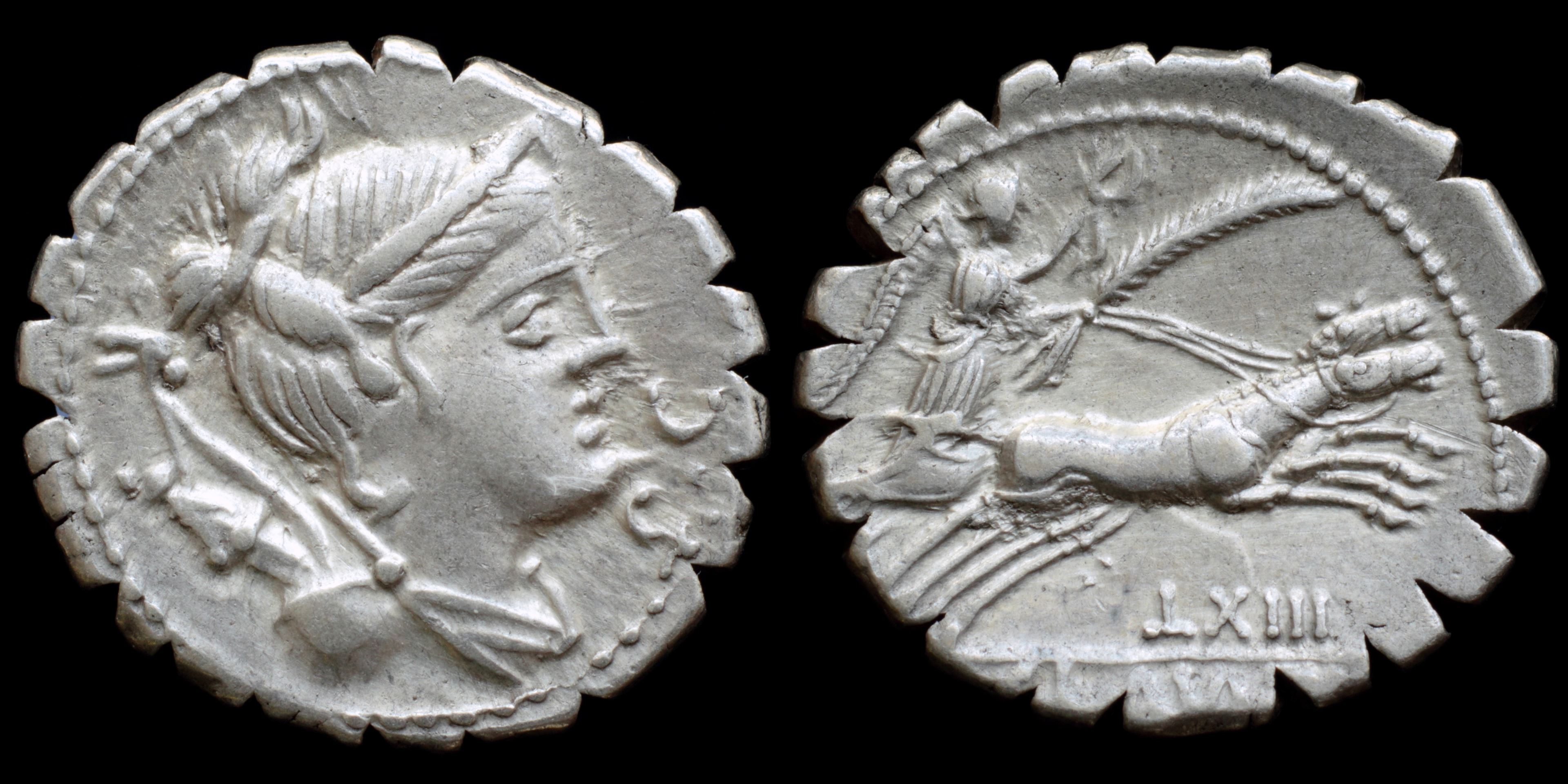
Reverse: Victory in biga right, holding wreath, reins and palm branch, LXIII TI·CLA(VD)·TI·F / (AP)·N
Die Orientation: -
Weight: 3.8 g
